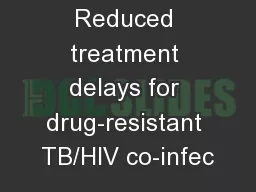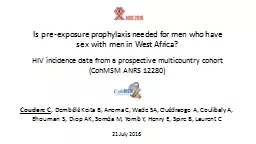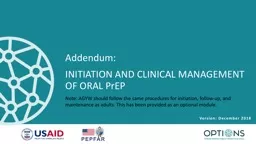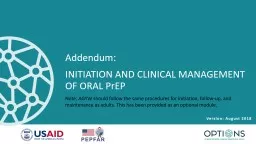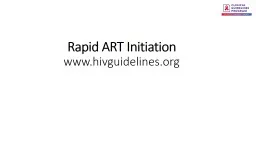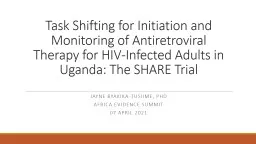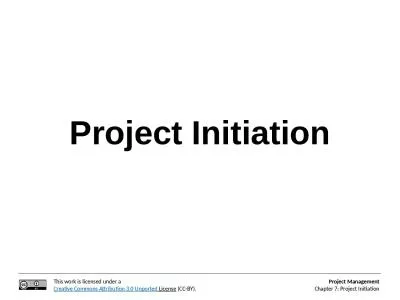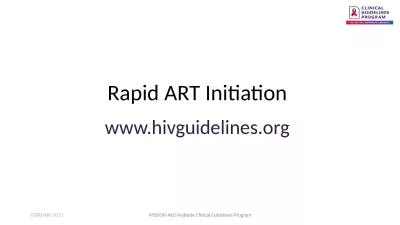PDF-Treatment Initiation at Time of HIV Diagnosis
Author : unita | Published Date : 2022-08-16
1 Ju ne 2019 The New Standard Provider FAQ Early diagnosis of HIV infection followed by prompt antiretroviral therapy ART initiation expands the concept of universal
Presentation Embed Code
Download Presentation
Download Presentation The PPT/PDF document "Treatment Initiation at Time of HIV Diag..." is the property of its rightful owner. Permission is granted to download and print the materials on this website for personal, non-commercial use only, and to display it on your personal computer provided you do not modify the materials and that you retain all copyright notices contained in the materials. By downloading content from our website, you accept the terms of this agreement.
Treatment Initiation at Time of HIV Diagnosis: Transcript
Download Rules Of Document
"Treatment Initiation at Time of HIV Diagnosis"The content belongs to its owner. You may download and print it for personal use, without modification, and keep all copyright notices. By downloading, you agree to these terms.
Related Documents


